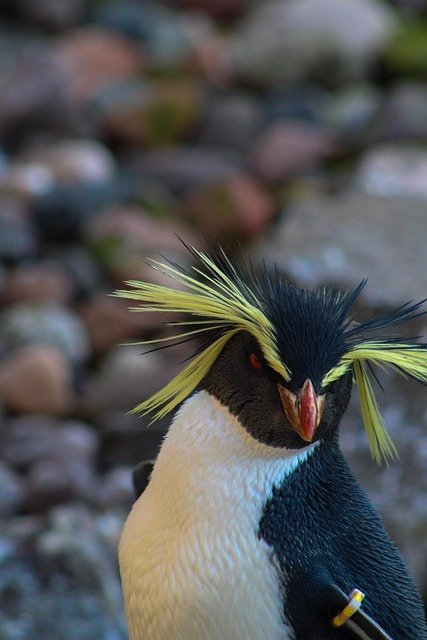**Topic: "The Amazing Adaptations of Penguins: Masters of Life in the Cold"** In

The Amazing Adaptations of Penguins: Masters of Life in the Cold
Penguins are some of the most fascinating creatures on our planet, perfectly adapted to thrive in the harsh, frigid environments of the Southern Hemisphere. These flightless birds have evolved a range of remarkable adaptations that allow them to survive and flourish in icy waters and extreme weather conditions. Let’s dive into the incredible features that make penguins the masters of life in the cold!
1. Streamlined Bodies
Penguins boast a unique body shape that is perfectly adapted for swimming. Their streamlined bodies reduce drag in the water, allowing them to glide effortlessly as they hunt for fish and other marine prey. This shape, combined with their powerful flippers, enables them to reach speeds of up to 15 miles per hour underwater!
2. Insulating Feathers
One of the most critical adaptations for penguins is their dense layer of feathers. Unlike most birds, penguins have a unique structure to their feathers that provides excellent insulation. They have a layer of down feathers beneath their outer feathers, which traps air and keeps them warm in freezing temperatures. Additionally, the outer feathers are waterproof, ensuring that their insulating layer stays dry.
3. Counter-Current Heat Exchange
To maintain their body temperature in icy waters, penguins have developed a counter-current heat exchange system in their blood vessels. This adaptation allows warm blood flowing from the body to warm the cooler blood returning from the extremities, minimizing heat loss and ensuring they can maintain their core temperature even in freezing conditions.
4. Social Behavior and Huddling
Penguins are highly social animals, often found in large colonies. During harsh weather, they exhibit a fascinating behavior known as huddling. By forming tight groups, they reduce exposure to the cold and wind, sharing body heat with one another. This communal behavior is crucial for survival, especially during the harsh Antarctic winters.
5. Unique Parenting Strategies
Penguins are also known for their remarkable parenting strategies. Many species, such as the Emperor Penguin, engage in shared parenting, where both parents take turns incubating eggs and feeding their chicks. This cooperative behavior ensures that the chicks receive the warmth and nourishment they need to survive in the cold.
6. Specialized Diet and Hunting Techniques
Penguins primarily feed on fish, squid, and krill, and their hunting techniques are finely tuned for their aquatic lifestyle. They can dive to impressive depths—some species can reach over 1,800 feet—and hold their breath for up to 20 minutes while searching for food. Their excellent eyesight underwater helps them spot prey even in low light conditions.
Conclusion
The adaptations of penguins are a testament to the wonders of evolution and the resilience of life in extreme environments. From their streamlined bodies and insulating feathers to their social behaviors and unique parenting strategies, penguins have mastered the art of living in the cold. As we continue to study these remarkable birds, we gain valuable insights into the complexities of life on Earth and the importance of conserving their habitats in the face of climate change.
Whether you're a seasoned wildlife enthusiast or simply curious about these charming birds, there's no denying that penguins are truly amazing creatures! 🐧✨

Upvoted! Thank you for supporting witness @jswit.